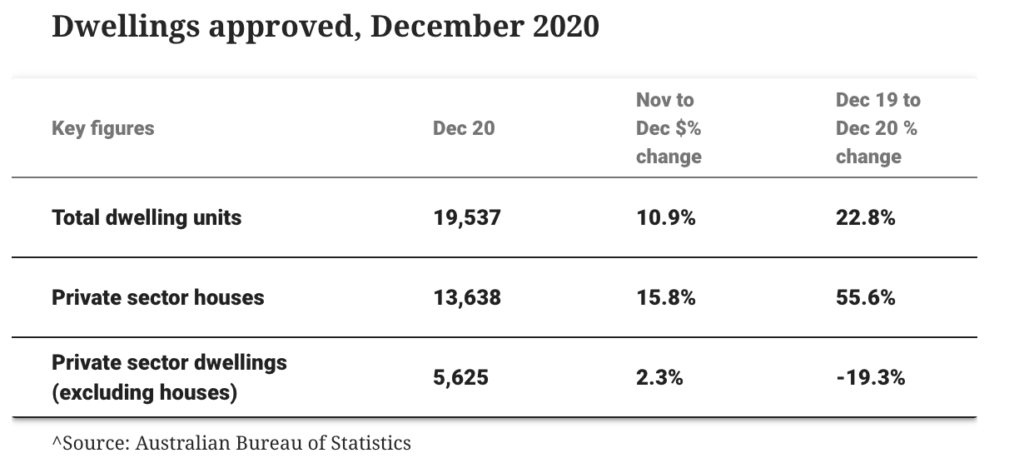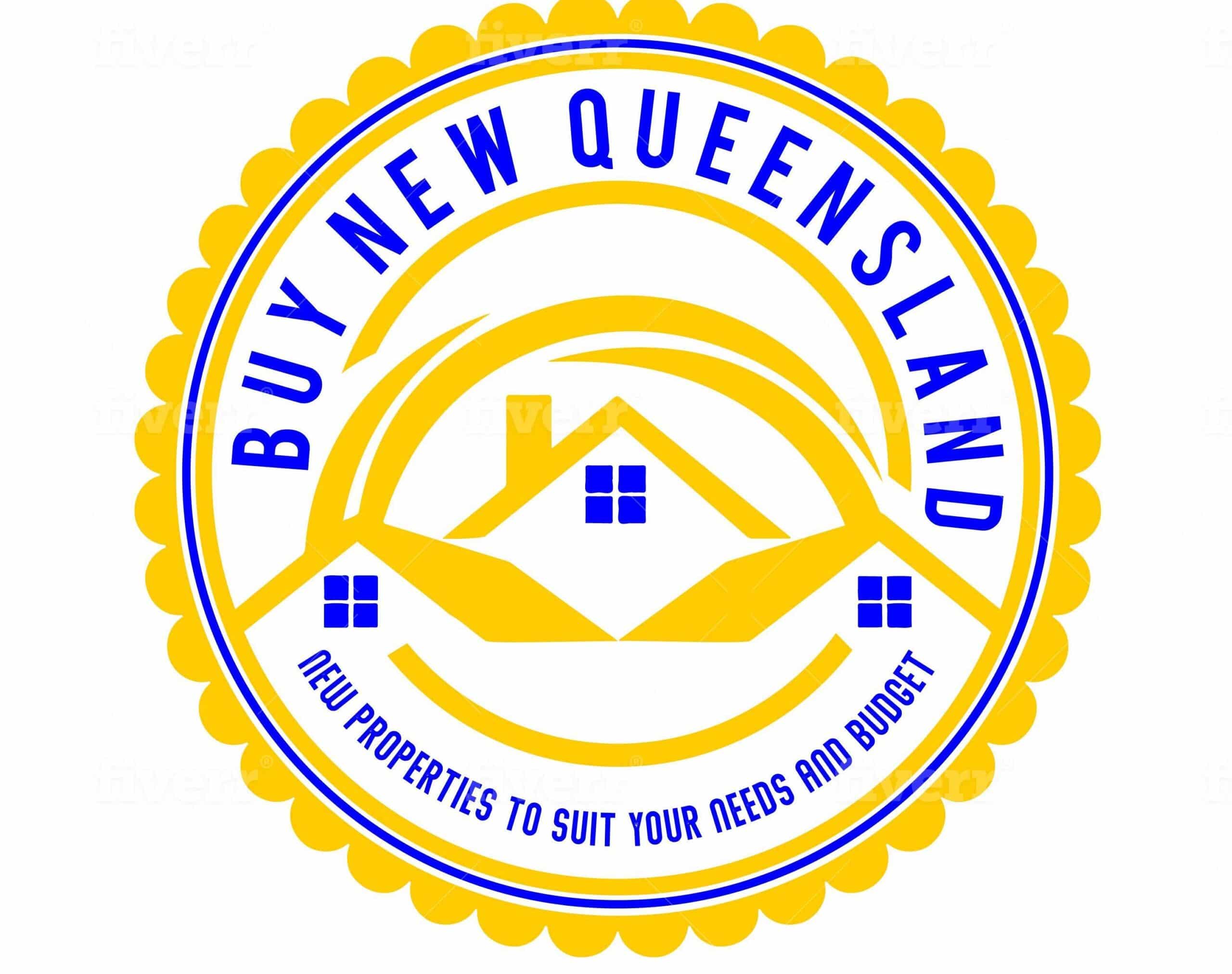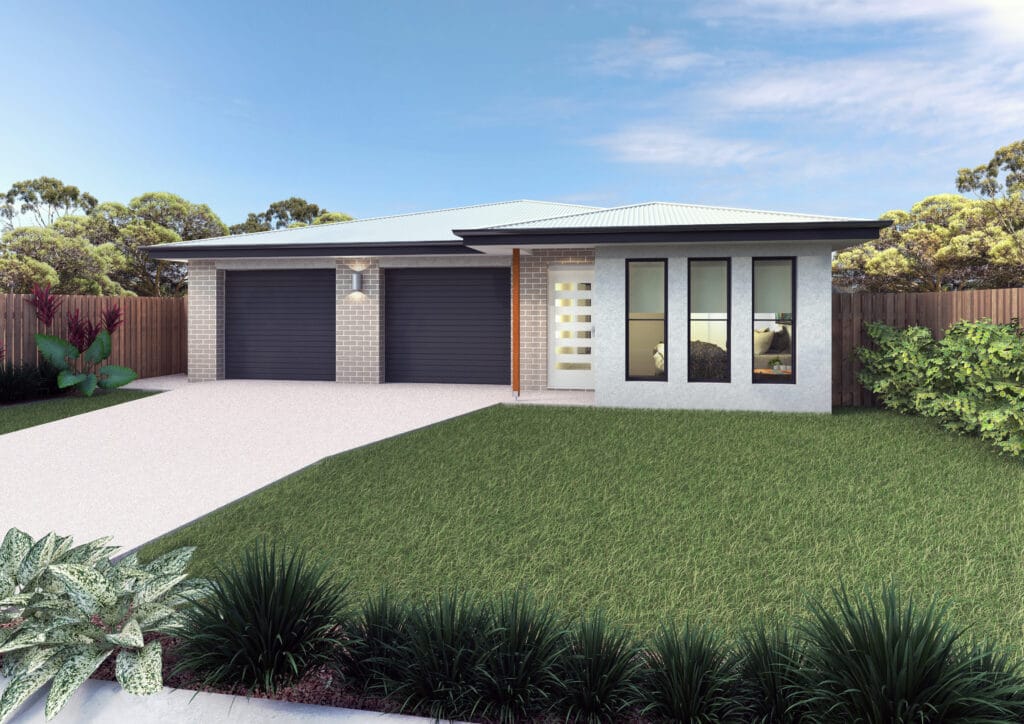As Queensland New House Approvals continue to run at two-decade highs, up 55.6 per cent over the year.
These have been spurred by the cheapest interest rates on record and multiple generous government incentives, applications for new detached houses rose at their fastest pace in almost 20 years—since April 2001—to reach their highest-ever monthly total of 13,785, according to seasonally adjusted figures from the Australian Bureau of Statistics.
The slump in construction activity, which saw the AiGroup Performance of Construction index contract for 25 successive months, has rebounded since October to now be at a hit a 3.5-year high.
The value of total building approved rose 4.9 per cent in December, while the value of non-residential building rose 10.1 per cent, having fallen 27.7 per cent in November.
The total number of new dwellings approved, including detached homes and apartments, lifted by 10.9 per cent to 19,537 while attached dwelling approvals—apartments, townhouses and semi-detached homes—rose 2.5 per cent, largely reversing the losses a month earlier, to a monthly total of 5,752.
Private sector dwellings excluding houses dropped by 19.3 per cent, down to 5,625 units approved.
Approvals for alterations and additions also lifted by 8.1 per cent in December to sit 37.1 per cent higher over the year.

“Despite the uncertainty experienced by developers and households during 2020, the total number of dwellings approved in the calendar year was 4.8 per cent higher than in 2019,” ABS director of construction statistics Daniel Rossi said.
“Private house approvals were strong across the country, with Victoria, South Australia and Western Australia hitting record highs in seasonally adjusted terms.”
Queensland recorded its highest private house approval figures in December since September 1994.
Overall Queensland’s unit approvals surged by 24 per cent over the month, to be up 83 per cent year on year, with house approvals climbing by 7.3 per cent.
The value of total building approved across December also rose by 4.9 per cent, while the value of non-residential building rose 10.1 per cent, having fallen 27.7 per cent in November.
It coincides with the surge in borrowing for housing construction which is currently 75 per cent higher than July.

The total value of new loan commitments for housing hit $24 billion in November, a rise of 5.6 per cent in October and 23.7 per cent, which was higher than the same month in the previous year.
Minister for Housing Michael Sukkar said the highly successful HomeBuilder scheme had now generated upwards of $18 billion of residential construction projects since its inception.
“Every additional building approval and every addition home sale means more work for our tradies and activity in our economy at a time it needs it most.
“The extension of HomeBuilder also ensures there will be a steady pipeline of construction activity through to 2022 to lock in this momentum for the construction sector,” Sukkar said.
In the four months leading into December, there were 26,300 applications for the $25,000 federal HomeBuilder grant for new builds, which has been extended until March at a reduced level of $15,000.
There were also 6,200 applications for the grant for “substantial” renovations.
Amid a much better than anticipated recovery from the Covid-19 recession, economists said the signs were good that approvals would continue to climb in the months ahead.
“Record lending for the construction of dwellings in December and building incentives—including the HomeBuilder extension and first home owner building grants—will fuel further strength in building approvals,” ANZ economist Adelaide Timbrell said.
“The key downside risk for 2021 approvals growth is Australia’s ongoing closed international borders, which will slow demand for housing from immigration and temporary international student and worker populations.”


